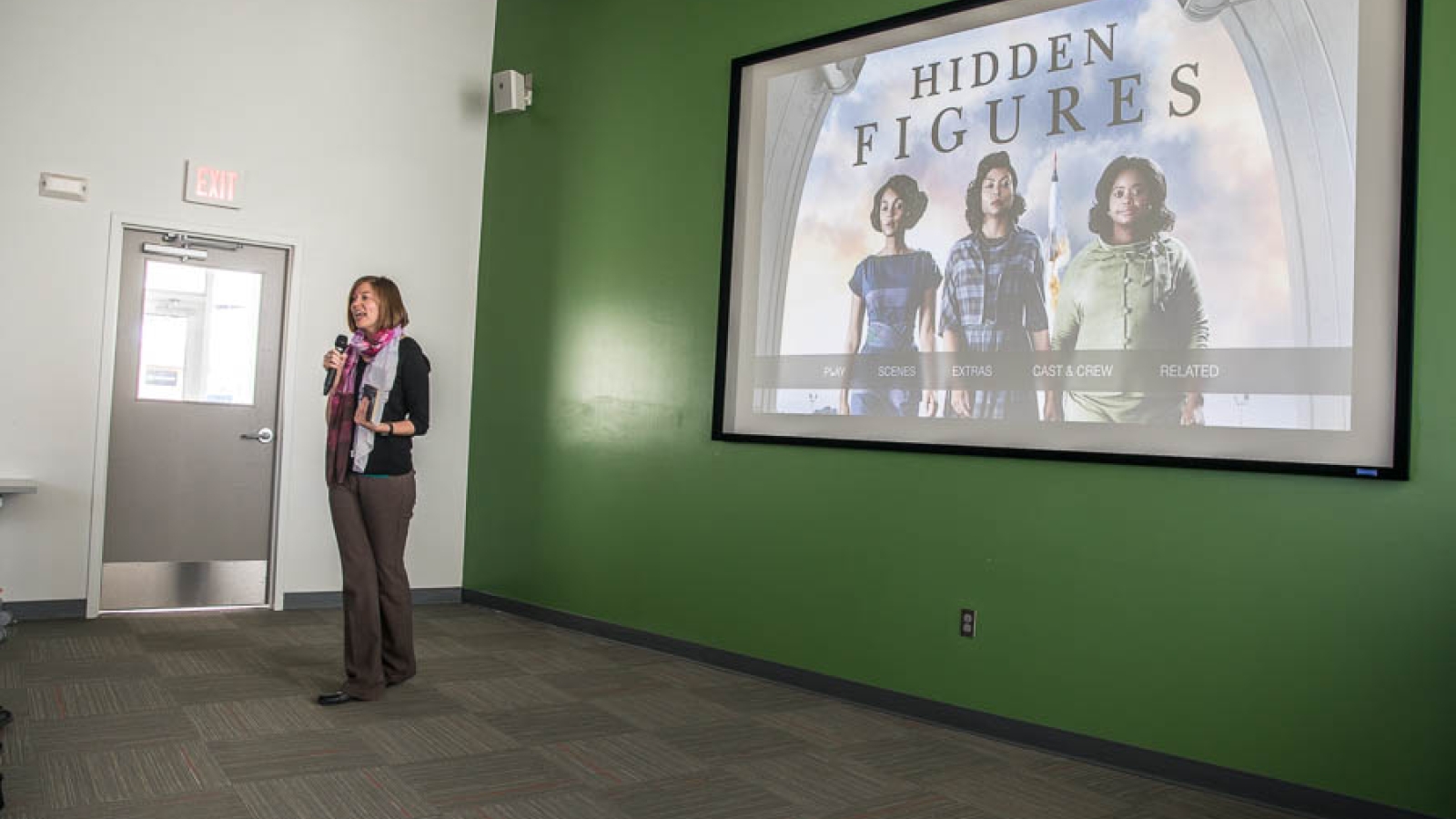
Kelly Kirk of Black Hills State University led a discussion about "Hidden Figures" at last week's Pi Day.
“Before a computer became an inanimate object and before Sputnik changed the course of history, before the Supreme Court case Brown v. Board of Education established that separate was in fact not equal, and before the poetry of Martin Luther King Jr.'s ‘I Have a Dream’ speech rang out over the steps of the Lincoln Memorial, a group of black women working at the Langley Memorial Aeronautical Laboratory in Hampton, Virginia, were helping America dominate aeronautics, space research, and computer technology, carving out a place for themselves as female mathematicians who were also black, black mathematicians who were also female.” (hiddenfigures.com)
Until recently, most Americans would not have recognized the names Katherine Johnson, Mary Jackson and Dorothy Vaughan. But with the release of the critically acclaimed movie “Hidden Figures,” that all changed.
Based on the book by Margot Lee Shetterly, the movie tells the story of three African-American women mathematicians who made valuable contributions to NASA during the early years of the United States’ space program. Last week, Sanford Lab sponsored a screening of the movie as part of Pi Day. Kelly Kirk, an instructor of history and assistant director of Black Hills State University’s Honors Program, gave a brief introduction to the film then led a follow-up discussion with the audience.
“This film is significant because it doesn’t just insert women into the history of a time or event. Instead, it shows how women are the story—they are there from the beginning, they are key actors, not just a sidebar to history," Kirk said.
"I was absolutely delighted by the evening," she added. "I had forgotten how much I enjoy the movie, and it seemed to really resonate with the audience. It was such a fun discussion to have!”
According to the Human Computer Project, hundreds of women worked as human computers for the National Advisory Committee for Aeronautics, and its successor, NASA, from the 1930s through the 1980s. Part of a long tradition of mathematically talented women, they helped power many of the great technological advances of the 20th century.
“As a child, I knew so many African Americans working in science, math, and engineering that I thought that's just what black folks did,” Shetterly wrote in the prologue of her book.
“This film and the book show women doing work they are passionate about, and how that had absolutely extraordinary results,” Kirk said. “Hidden Figures highlights intersections in history. The lives of these women give us insight into not only a time of change in race and gender history, but also impact the conversation about civil rights, and leave an indelible imprint on the history of math and science. That message is incredibly empowering.”
The women featured in this film are role models who serve as an inspiration to young women interested in STEM fields, she added.
“I know in the history field, it often helps to delve into what opportunities are available. STEM is constantly evolving. Discussing the ever-changing opportunities raises the interest and excitement level. Sometimes we don't even realize what directions we can take. We just automatically assume STEM means one specific direction. But it can open many doors.”
The movie itself is a snapshot of this significant story in American history. To learn more about the Hidden Computer Project, go to www.hiddenfigures.com.